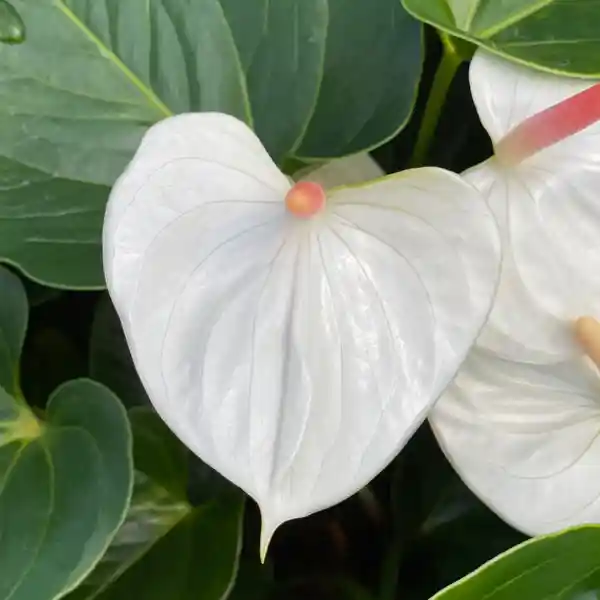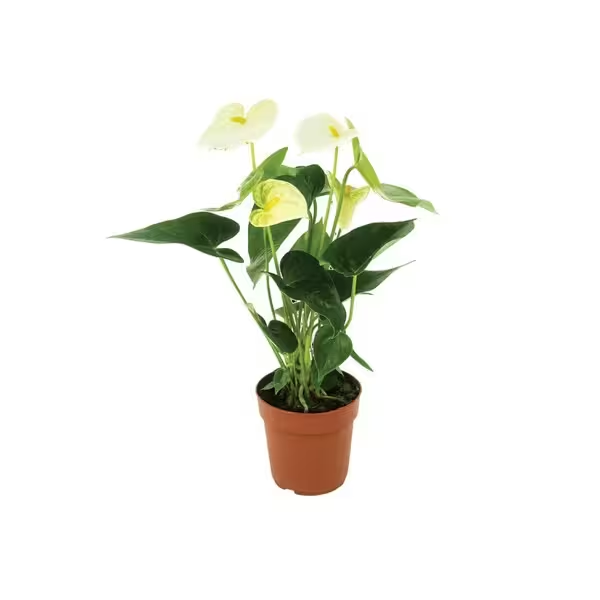Cart
0
White Anthurium Plant
Rs. 0.00
\n
\n
\n
\n
\n
\n
\n
\n
\n
\n
\n
\n
\n
\n
\n
\n
\n
\n
\n
\n WHITE ANTHURIUM PLANT[/caption]
\n
WHITE ANTHURIUM PLANT[/caption]
\n WHITE ANTHURIUM PLANT[/caption]
\n
\nBy providing these conditions, your White Anthurium should flourish and offer a continuous display of its elegant, long-lasting blooms.
\n
\n
WHITE ANTHURIUM PLANT[/caption]
\n
\nBy providing these conditions, your White Anthurium should flourish and offer a continuous display of its elegant, long-lasting blooms.
\n
\n
\n
\nSelling Size : Last Image | Pot Included | Secure Packing
\nWhite Anthuriums, like their colorful counterparts, are beautiful tropical plants known for their elegant white, heart-shaped spathes (which are often mistaken for flowers) and glossy green leaves. They can be a stunning addition to any home or office, especially in India's diverse climate, provided you give them the right care.
\n \n \n[caption id="attachment_18436" align="aligncenter" width="600"] WHITE ANTHURIUM PLANT[/caption]
\n
WHITE ANTHURIUM PLANT[/caption]
\nHere's a comprehensive guide to caring for your White Anthurium:
\n1. Light: \n-
\n
- Bright, indirect light is crucial. This is key for encouraging abundant blooms and maintaining vibrant foliage. \n
- Avoid direct sunlight, especially the harsh afternoon sun in India. Direct sun can easily scorch the delicate leaves and white spathes, leading to brown, crispy spots. \n
- Too little light will result in fewer flowers, smaller spathes, and slower growth. The plant might become leggy. \n
- Ideal placement: Near an east-facing window (which provides gentle morning sun) or a few feet away from a south or west-facing window, where the light is filtered by sheer curtains. Rotate the plant periodically to ensure even light exposure. \n
-
\n
- Water when the top 50-75% of the soil feels dry to the touch. In India's warm and humid months, this might be more frequent (e.g., every 5-7 days), while in cooler or drier periods, it could be less often (e.g., once every 10-14 days). \n
- Thoroughly water until water drains from the bottom of the pot, then discard any excess water from the saucer immediately. Anthuriums are highly susceptible to root rot if they sit in soggy soil. \n
- Never let the soil dry out completely, but also avoid continuous moisture. \n
-
Signs of improper watering:
\n
-
\n
- Yellowing leaves (especially lower ones): Often a sign of overwatering. \n
- Brown tips or edges on leaves/spathes: Can indicate underwatering or low humidity. \n
- Drooping/wilting leaves: Can be caused by both overwatering (due to root rot preventing water uptake) and underwatering (lack of moisture). Check the soil to diagnose. \n
\n
-
\n
- Anthuriums are native to tropical rainforests and absolutely thrive in high humidity (ideally 60-80% or higher). This is particularly important for their glossy leaves and to prevent browning on the edges of the spathes. \n
- Given India's varying humidity levels, especially during dry spells, supplementing humidity is often beneficial:
\n
-
\n
- Use a humidifier: This is the most effective way to maintain consistent high humidity. \n
- Pebble tray: Place the pot on a tray filled with pebbles and water, ensuring the pot itself doesn't sit in the water. \n
- Misting: Mist the leaves regularly, especially during dry periods. Daily misting is often appreciated. \n
- Group plants: Grouping plants together creates a localized microclimate with higher humidity. \n
- Bathroom/kitchen: These rooms often have naturally higher humidity, making them good locations. \n
\n
-
\n
- Maintain warm, consistent temperatures between 18∘C and 28∘C (65∘F and 82∘F). \n
- Avoid temperatures below 15∘C (59∘F), cold drafts, or sudden temperature fluctuations. These can stress the plant, leading to yellowing leaves or stunted growth. Keep them away from AC vents. \n
-
\n
- Anthuriums are often epiphytic in nature, so they need a loose, airy, well-draining, and slightly acidic potting mix. This prevents waterlogging and provides good aeration for their roots. \n
- An excellent mix can be:
\n
-
\n
- Orchid bark (for superb drainage and aeration) \n
- Coco coir or peat moss (for moisture retention) \n
- Perlite or pumice (for drainage and aeration) \n
- A small amount of compost or vermicompost for nutrients. \n
\n - Repotting: Repot every 1-2 years, or when the plant becomes visibly root-bound. Choose a pot that is only slightly larger than the current one. They don't mind being a little snug. \n
-
\n
- Anthuriums are moderate feeders, especially during their active growing season (spring through summer/early autumn). \n
- Use a balanced liquid fertilizer formulated for flowering plants (often higher in phosphorus, the middle number in NPK) diluted to half or quarter strength. \n
- Fertilize every 2-4 weeks during the growing season. \n
- Reduce or pause fertilization in the fall and winter when growth slows. \n
- Always water the plant before fertilizing to prevent root burn. \n
-
\n
- Remove spent flowers (spathes) by cutting the stalk close to the base of the plant. This encourages the plant to produce new blooms. \n
- Trim off any yellowing, brown, or damaged leaves to direct the plant's energy towards healthy growth. Use clean, sharp shears. \n
-
\n
- White Anthuriums are generally robust, but keep an eye out for common houseplant pests like spider mites, mealybugs, aphids, and thrips. \n
- Inspect your plant regularly, especially the undersides of leaves. Treat any infestations promptly with insecticidal soap or neem oil. \n
- Root rot is the most common disease, caused by overwatering and poor drainage. Ensuring the right watering practices is vital. \n
- Good air circulation can help prevent fungal issues. \n
-
\n
- Like all Anthuriums, the White Anthurium contains calcium oxalate crystals and is toxic if ingested by pets or humans. It can cause irritation to the mouth and digestive tract. Keep it out of reach of curious children and pets. \n
 WHITE ANTHURIUM PLANT[/caption]
\n
\nBy providing these conditions, your White Anthurium should flourish and offer a continuous display of its elegant, long-lasting blooms.
\n
\n
WHITE ANTHURIUM PLANT[/caption]
\n
\nBy providing these conditions, your White Anthurium should flourish and offer a continuous display of its elegant, long-lasting blooms.
\n
\nFrequently Bought Together
KEINE MASSENWARE
Hand picked brands
from California
We refined our collections, hand picking our brands, buying deep in the styles we love, slowly evolving into a perfectly balanced store offering the ideal fit for every woman.
Free Shipping
From all orders over $100
Quality Support
24/7 online feedback
Return & Refund
Return money within 30 days
Gift Voucher
20% off when you shop online

